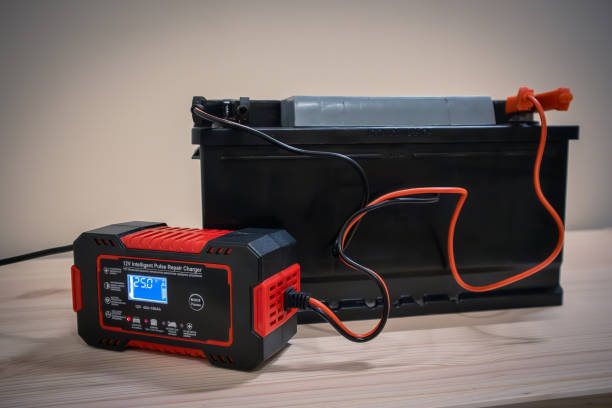Every car owner dreads that familiar click. The sound of a dead battery after your vehicle has been sitting for too long. Whether you’re traveling, storing your car for the season, or just driving less often, inactivity can quietly drain your car’s power source. Learning how to keep your car batteries healthy during long periods of inactivity can save you stress, time, and unexpected repair costs.
In this guide, we’ll walk you through exactly what happens when your car sits idle, how to prepare your battery for rest, and the best ways to maintain it so it’s always ready when you are.
1. Why Car Batteries Struggle During Inactivity
A car battery is like a living system. It loses energy even when it’s not being used. When a car sits idle:
- Parasitic drains from alarms, clocks, and onboard computers continue to draw small amounts of power.
- Self-discharge naturally reduces battery charge over time.
- Sulfation begins when lead sulfate crystals form on the battery plates, especially if it’s left partially discharged.
- Temperature extremes also play a role. Heat speeds up chemical reactions that age the battery faster, while cold slows down the flow of energy and reduces cranking power.
Without care, a healthy battery can weaken within weeks, and if left for months, it can die completely.
2. Know Your Battery Type Before Storing
Not all car batteries are built the same. To keep your car batteries healthy, it helps to understand what kind you have:
- Flooded Lead-Acid Batteries: These are the most common and require occasional water top-ups. They’re more prone to corrosion.
- AGM (Absorbent Glass Mat) Batteries: These are sealed, maintenance-free, and more resistant to vibration and discharge.
- Lithium Batteries: Found in some modern or hybrid cars. They need specific chargers and shouldn’t be completely drained.
Each type has different care needs, but all require one thing: staying charged and protected from extreme conditions.
READ ALSO: Best Magnetic Phone Holders for Car (2025/2026): Top Picks and Buying Guide
3. Preparing Your Battery Before Long Storage
Before you park your car for an extended time, a little preparation goes a long way. Follow these steps to keep your car batteries healthy and strong:
- Check Battery Health: Use a voltmeter or a battery tester to ensure it’s fully charged. Anything below 12.4 volts needs charging.
- Clean the Terminals: Dirt and corrosion act like tiny thieves, stealing current. Scrub gently with baking soda and water.
- Secure the Battery: Make sure it’s firmly seated. Vibration can damage internal parts.
- Top Up Water (if needed): For traditional lead-acid types, add distilled water up to the recommended level.
- Apply Grease: A thin layer of petroleum jelly or dielectric grease keeps corrosion away.
- Record Settings: If you plan to disconnect the battery, note your radio codes and dashboard presets.
These small actions create a strong foundation for longer battery life.
4. Best Ways to Preserve Battery Health While the Car Is Idle

4.1 Use a Battery Maintainer
A battery maintainer (or float charger) is your battery’s best friend during downtime. It delivers just enough power to keep it charged without overloading it. Unlike trickle chargers that can overcharge, maintainers automatically stop and restart when needed.
Choose one that matches your battery type and voltage. Plug it into a wall outlet and connect the clamps correctly—positive to positive, negative to negative. This simple step can add years to your battery’s life.
4.2 Disconnect the Negative Terminal
If you can’t use a maintainer, disconnecting the negative terminal helps stop parasitic drains. Always remove the negative cable first and insulate it so it doesn’t touch metal. The downside? You’ll lose your clock and radio presets. But your battery will thank you later.
4.3 Remove and Store the Battery
If you won’t be using your car for several months, consider removing the battery entirely. Store it in a cool, dry place away from direct sunlight. Keep it on a wooden surface (not concrete) and connect it to a maintainer if possible.
4.4 Start or Drive the Car Occasionally
If storage is short-term, start the engine and drive for 20–30 minutes every two weeks. This allows the alternator to recharge the battery fully. Idling alone doesn’t generate enough voltage to maintain charge, so a short drive is better.
4.5 Use a Solar Maintainer
If you’re storing your car outside or away from an outlet, a solar maintainer is a great option. These devices use sunlight to provide a steady trickle of power. They’re easy to set up on the dashboard or roof and perfect for long-term storage in sunny climates.
READ ALSO: How To Clean Car Headlights: Complete DIY Guide With Kits and Long-Term Fixes
5. Adapting to Weather and Environment
Your battery’s environment plays a huge role in how well it stays healthy.
- Cold Weather: Cold slows chemical reactions, reducing your battery’s power. Keep the car in a garage if possible. Use an insulated battery blanket if temperatures drop below freezing.
- Hot Weather: Heat causes battery fluid to evaporate faster and speeds up corrosion. Store your car in shade or a well-ventilated area.
- Humid Areas: Moisture leads to rust and corrosion. Wipe terminals dry and use anti-corrosion spray.
These adjustments help you keep your car batteries healthy no matter where you live.
6. Monitor Your Battery During Storage
Even when inactive, your battery still needs a quick check every few weeks. Here’s how to monitor it effectively:
- Check Voltage: Use a multimeter every 6–8 weeks. A healthy battery should stay around 12.6 volts. Recharge if it drops below 12.4 volts.
- Inspect Visually: Look for swelling, cracks, leaks, or corrosion buildup.
- Test Charger Function: If using a maintainer, confirm the indicator light shows charging or maintaining properly.
- Recharge When Needed: Don’t let it stay low for too long. Low voltage encourages sulfation, which permanently weakens your battery.
Treat it like a living thing. It needs occasional attention to stay healthy.
7. Re-commissioning Your Car After Storage
When you’re ready to get back on the road:
- Inspect Before Installing: If you removed the battery, check for leaks, corrosion, or low fluid levels.
- Clean Terminals: Wipe off any residue or oxidation.
- Charge Before Use: Even with a maintainer, top up to full charge before starting.
- Reconnect Safely: Positive cable first, then negative.
- Start and Run the Engine: Let it idle for a few minutes and observe for warning lights or electrical issues.
- Test the Charging System: Ensure your alternator is working properly using a voltage test or a local auto shop’s quick scan.
This ensures your battery transitions smoothly back to daily use without surprises.
READ ALSO: 15 Best Car Accessories on Amazon Under $100 (Top Picks for Every Driver)
8. Tools, Checklists, and Common Mistakes
Recommended Tools
- Smart battery maintainer (NOCO Genius, CTEK, Schumacher)
- Voltmeter or multimeter
- Battery cleaning brush
- Dielectric grease
- Safety gloves and glasses

Storage Checklist
- Battery fully charged
- Terminals cleaned and greased
- Battery secured or removed
- Voltage noted
- Charger or maintainer connected
Common Mistakes to Avoid
- Letting the battery sit fully discharged
- Using a regular charger for lithium batteries
- Storing batteries on cold concrete floors
- Forgetting to disconnect the negative cable
- Ignoring corrosion buildup
Each of these mistakes can shorten your battery’s lifespan.
Conclusion
Your car’s battery is the heart of its electrical system. When your vehicle rests, that heart still needs gentle care. By following these simple steps—cleaning, charging, disconnecting, and monitoring—you can keep your car batteries healthy through months of inactivity.
Remember, a few minutes of preventive care today can save you hours of frustration later. Whether you’re storing your weekend ride, your daily driver, or your vintage classic, give your battery the protection it deserves.
FAQ
1. How long can a car sit before the battery dies?
Usually, a battery can sit unused for 4–8 weeks before losing charge. Using a maintainer can extend this indefinitely.
2. Is it okay to start the car every week?
Yes, but drive it for at least 20 minutes to allow full recharging. Idling alone isn’t enough.
3. Can I leave a battery maintainer connected all the time?
Yes. Smart maintainers automatically stop charging when the battery is full, preventing overcharging.
4. Should I disconnect the battery if storing for a year?
Yes, or better yet, remove and store it indoors on a maintainer for the best results.


